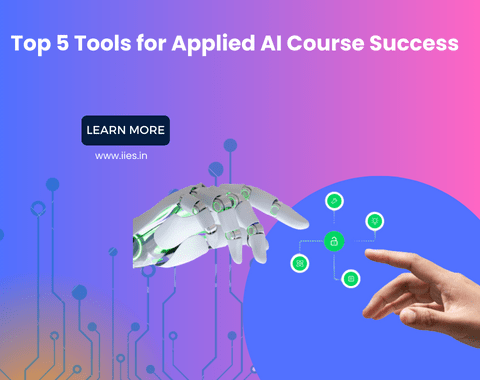
In an increasingly tech-driven world, Applied AI courses have emerged as essential pathways to success in various industries. These courses bridge the gap between theoretical knowledge and practical application, equipping individuals with the skills needed to thrive in the realm of artificial intelligence. As the demand for professionals with Applied AI expertise continues to soar, mastering the right tools becomes paramount. In this blog, we will explore the top 5 tools that are instrumental in achieving success in Applied AI courses.
Applied AI courses are designed to go beyond theoretical concepts and delve into the practical aspects of artificial intelligence. They emphasize hands-on learning, problem-solving, and real-world applications. Unlike theoretical AI, which focuses on the principles and algorithms of AI, applied AI equips students with the skills to implement AI solutions in various domains and industries. Whether it’s healthcare, finance, or autonomous vehicles, Applied AI is the driving force behind innovative solutions.
Tools are the scaffolding upon which applied AI courses are built. They provide students with the means to turn theoretical knowledge into practical skills. These tools facilitate experimentation, data analysis, and the development of AI models. Familiarity with these tools not only enhances the learning experience but also prepares professionals for the challenges they will encounter in their careers.
The language of choice in the field of AI is Python. Its simplicity, versatility, and extensive libraries make it the preferred programming language for Applied AI. Jupyter Notebooks, on the other hand, offer an interactive and visual environment for writing Python code. They are invaluable for documenting code, experimenting with algorithms, and presenting results. Python, coupled with Jupyter Notebooks, is the foundation upon which Applied AI solutions are built. For the creation of neural networks and deep learning algorithms, libraries like TensorFlow and PyTorch offer effective tools.
Data visualization is a crucial aspect of AI. It allows practitioners to gain insights from data, communicate findings effectively, and make informed decisions. Matplotlib and Seaborn are two essential tools for creating stunning visualizations in Python. They enable users to generate various types of charts, plots, and graphs, turning raw data into meaningful insights. Whether you’re exploring data, building AI models, or presenting results, these tools are indispensable.
Machine learning lies at the heart of AI applications. Scikit-Learn is a powerful library that simplifies the implementation of various machine learning algorithms. It provides a consistent and user-friendly interface for tasks such as classification, regression, clustering, and more. With Scikit-Learn, students can focus on understanding the algorithms’ principles and fine-tuning their parameters without the burden of low-level coding. It’s a go-to choice for anyone venturing into the world of machine learning.
Deep learning has revolutionized AI, enabling remarkable breakthroughs in image recognition, natural language processing, and more. TensorFlow and PyTorch are two dominant frameworks for building deep neural networks. They offer high-level abstractions, making it easier to design complex architectures and train deep models. These frameworks empower students to tackle advanced AI challenges, including image classification, object detection, and sequence generation. With their extensive communities and resources, TensorFlow and PyTorch are indispensable tools for aspiring deep learning practitioners.
Data is the lifeblood of AI. Before algorithms can work their magic, data must be processed, cleaned, and transformed. Pandas, a Python library, excels in data manipulation and analysis. It provides powerful data structures and functions for tasks like filtering, aggregation, and handling missing values. Applied AI courses often involve real-world datasets, and Pandas equips students with the skills to prepare data for AI applications effectively.
To harness the full potential of these tools, students should adopt effective strategies. Exploring online courses, tutorials, and practice projects can help build proficiency. Additionally, leveraging online communities and forums for problem-solving and peer support is essential. These tools are readily accessible, with many offering free resources for learning and experimentation.
Real-world success stories and case studies exemplify the impact of these tools. Individuals and organizations have achieved remarkable results by applying their skills in Applied AI courses. These stories serve as inspiration and motivation, showcasing the possibilities that await those who master these tools.
While these tools are powerful allies, students may encounter challenges along the way. Common obstacles include debugging code, managing large datasets, and selecting the right algorithms. Fortunately, online communities, documentation, and mentors can provide solutions and guidance to overcome these hurdles.
In conclusion, Applied AI courses are a gateway to success in today’s AI-driven world. Mastering the top 5 tools Python and Jupyter Notebooks, data visualization tools, machine learning libraries, deep learning frameworks, and data manipulation tools is essential for aspiring AI professionals. These tools empower students to turn their theoretical knowledge into practical skills and real-world solutions. As AI continues to transform industries, those who embrace these tools and embark on their learning journey are well-equipped to thrive in the exciting field of Applied AI.
Indian Institute of Embedded Systems – IIES